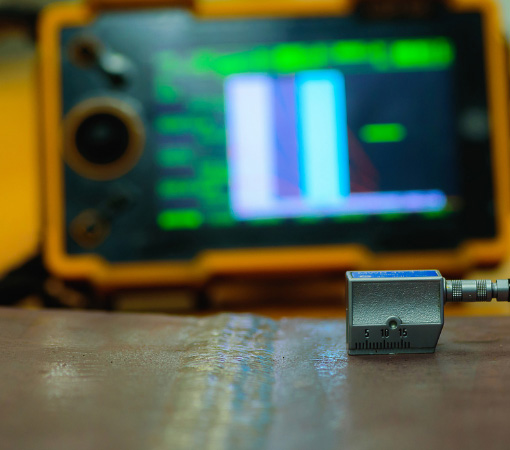Flawless Welding Inspections
Welding inspection is of utmost importance as it ensures that the welded structures are safe and reliable for their intended use. Welded structures are vital components in many industries, ranging from construction and transportation to manufacturing. To ensure the safety of welds throughout all sectors, welding inspection is an essential step – any flaws or defects can have disastrous consequences in terms of injury, loss of life and structural failure. A qualified inspector has a hugely important role within this process; helping guarantee that quality standards are maintained consistently across welded joints and regulatory requirements are followed accurately for stakeholders' peace of mind alike.

A welding inspector uses various methods to perform the inspection and determine the quality of the welded joint. The following are some of the most common methods used by our inspectors:
- Visual Inspection: This is the most basic and commonly used method of inspection. A welding inspector uses their eyes to examine the welded joint to detect visible defects such as cracks, porosity, undercutting, and lack of fusion.
- Dye Penetrant Testing: This method is used to detect surface defects in welded joints that are not visible to the naked eye. A dye penetrant is applied to the welded joint, and any defects will be highlighted by the dye.
- Magnetic Particle Testing: This method is used to detect surface and near-surface defects in ferromagnetic materials. A magnetic field is applied to the welded joint, and any defects will be highlighted by the magnetic particles.
- Ultrasonic Testing: This method is used to detect internal defects in welded joints, such as cracks or voids. Ultrasonic waves are sent through the welded joint, and any defects will be detected by the reflected waves.
- Radiographic Testing: This method is used to detect internal defects in welded joints, such as porosity or lack of fusion. X-rays or gamma rays are passed through the welded joint, and any defects will be detected by the changes in radiation.
- Eddy Current Testing: This method is used to detect surface and near-surface defects in non-ferromagnetic materials. A magnetic field is generated around the welded joint, and any defects will be detected by the changes in the electrical conductivity.
- Hardness Testing: This method is used to determine the hardness of the welded joint. A hardness tester is used to measure the hardness of the welded joint, which can indicate the strength and ductility of the joint.
An experienced welding inspector is the key to safeguarding quality and safety. Through careful selection of suitable methods for each welded joint, based on its materials and industry regulations, they can identify any potential flaws that could be hazardous down the line.
Be smart and get a 3rd Party Welding Inspection.
At Inspexion.com, we provide quotes for 3rd party welding inspections so that you can be sure of the structural integrity and serviceable life cycle of your infrastructure. We pride ourselves on being the quickest and most cost-effective way to inspect any infrastructure . Sign on and request a quote - then an experienced inspector will examine the project and send you a report in the time frame of your choosing.












